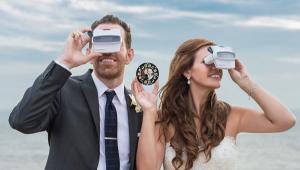Copyright & Contracts; Know Your Rights!
“I actually think that, as a society, we have a relatively clear understanding of copyright basics.”
Over the course of writing this column, I have received many questions on rights—copyrights, licensing rights, privacy rights, and model releases. When you contract with a client for photographic services, knowledge of these issues is critical to your business success and profit. While I can’t cover all the many issues in one column, I thought I’d start out by talking to two photographers active in the education of photographers on copyright and contracts, Susan Carr and Blake J. Discher. In this column they will discuss how to start the copyright and contracts conversation, deal with copyright negotiation and registration, and handle model releases.
Susan Carr is a Chicago-based photographer who has been in business for over 20 years. Her photographs are included in corporate and private collections, most notably the Pfizer Corporation and the Museum of Contemporary Photography. A past president of ASMP (American Society of Media Photographers), Carr has long been dedicated to the advocacy and education of fellow photographers. She organized and managed the highly successful “ASMP Strictly Business 2” conferences and currently serves as education director at ASMP. Carr is the editor of the latest ASMP Professional Business Practices in Photography, published by Allworth Press, and is currently working on her own book. Her work is online at:
www.susancarrphoto.com.
Several years ago, when Detroit photographer and educator Blake J. Discher was asked by a business magazine to share one of the reasons for his success, he credited his knack for negotiating with prospective clients. Soon he was sharing his knowledge on this topic with individuals and trade groups across many industries. Discher has presented each of his two seminars, “Web Marketing” and “I Stink at Negotiating,” to more than 100 audiences in the past several years. He writes a blog on web marketing and negotiating, www.groozi.com. His photographic work can be seen at www.fireflystudios.com and his SEO consulting firm at www.go-seo.com.
Shutterbug: What is the most misunderstood aspect of copyright?
Susan Carr: I actually think that, as a society, we have a relatively clear understanding of copyright basics. We all watch movies and purchase computer software which is a very direct reminder that you are paying for a particular use to content someone else owns and that “all other rights are reserved.” Photographers and the buyers of our services understand that we create an image and we own the copyrights to that image.
I think there is more confusion around licensing because it is handled so differently creator to creator. Photographers need to clearly articulate the use being licensed and buyers need to ask if the license is not expressly stated. Even if the use being licensed is unlimited for a particular business or person, it is still a license and needs to be written down. This is simply professional; good business practices are steps taken to avoid conflicts and build long-term, mutually-beneficial relationships.
Another misunderstood area is how to register your work with the Copyright Office and what the benefits of registration are. An artist does not have the full benefit of the law unless their work is registered prior to infringement, so while you own the rights to your images at the moment of creation, you do not have the big stick in a dispute without registration. ASMP has an initiative going on right now called “Registration Counts” to train photographers about the how and why of registering images.
SB: How are copyrights and licensing connected?
Susan Carr: The two are completely hinged. Owning the copyrights to our photography happens automatically when we create an image. Licensing the use of that intellectual property is how a photographer generates income.
The Picture Licensing Universal System (PLUS) defines licensing as, “A legal agreement granting permission to exercise a specified right or rights to a work, often encompassed in an invoice, or the act of granting same.” Simply put, a license is giving your client the legal permission to use your images. Any photographer who says “I don’t bother with licensing” is not accurate. They may not bother to engage in formal and professional licensing practices, but if they are commissioned to do a photograph and a client uses the image, the photographer is, in fact, licensing.
In the absence of one of these very specific actions—being an employee, signing a work made for hire agreement, or executing a transfer of copyright—the creator of a photograph owns the copyrights and with those rights comes certain responsibilities. Photographers need to professionally license their images to protect themselves, their work, and their clients. Everyone needs to clearly understand what rights are being extended. This avoids conflicts and misuse.
SB: What are the most important points of a contract negotiation?
Blake J. Discher: I’m negotiable on everything, but the more rights they want, the more I’ll charge. I find when the client is asking for a “buyout” (whatever that is) they likely have been burned in the past by a greedy photographer and are covering themselves for future uses. I’ll ask what they need and then craft the usage license according to their wishes, again being fairly compensated for it. As for what’s important, I like to link the usage/license to satisfactory payment of the invoice. It’s useful leverage in getting payment from a slow-pay client.
SB: What line items in a contract best protect the photographer on copyright issues?
Blake J. Discher: License and usage. I like to place a line that very specifically states that copyright remains with the photographer and that the images will be registered with the US Copyright Office. The more businesslike we conduct ourselves, the better. I am convinced most unauthorized use questions come about because the photographer did not make the terms clear, thought that putting them on the back of the invoice was sufficient, or didn’t include copyright info in the image metadata.
SB: How are copyrights and privacy rights (and model releases) connected?
Susan Carr: Copyrights give a photographer the right to control the copying, modifying, and distribution of their images. The privacy rights of a property owner or an individual are separate, but they must be considered when a photographer is licensing their work. If a photograph contains a subject that is recognizable, a model release may be needed for the photographer to license the use of the image. For example, model releases would not be necessary to license an image of people walking down a city street as an illustration for a newspaper article. However, the same image being licensed for use in an advertising campaign for a corporation would require model releases. The use of the image is the key factor.
SB: What would you like to add about copyrights and contracts for our readers?
Susan Carr: I would like to recommend that additional information on these topics is available from these websites: www.asmp.org/licensing, www.asmp.org/copyright, and www.asmp.org/releases.
Blake J. Discher: I wish I could convince everyone to register their images—all of them. I confess I am guilty of selectively registering, so this is a case of practice what I preach, not what I do. One tidbit ASMP’s Legal Counsel Victor Perlman came away with after his efforts to combat Orphan Works legislation was that someone in the copyright office said, and I’m paraphrasing, “We don’t understand why photographers are so up in arms about this; very few of them even register their images.” Those were haunting words to me. Think about it…they don’t think we care because we’re not using the tools already in place.
- Log in or register to post comments
















































